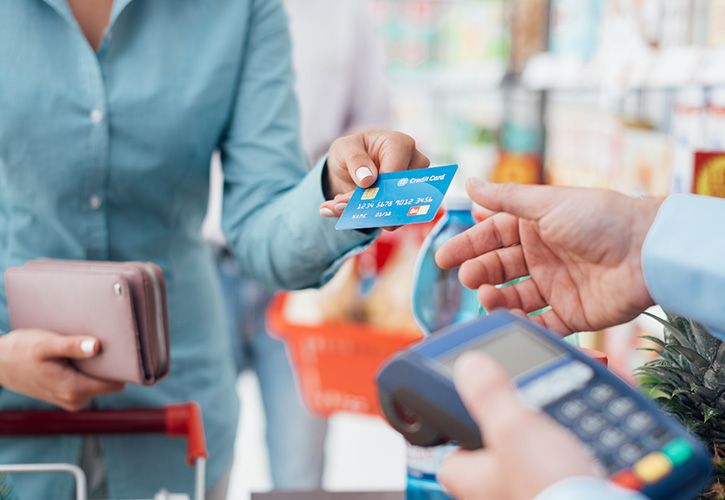UK DIY News
KPMG Reveals Latest Consumer Pulse Survey Findings

Headline findings of KPMG’s Consumer Pulse survey about 2024 intention:
- 41% of consumers say they’re feeling less financially secure heading into 2024, than at the start of 2023.
- 22% say they feel more secure than a year ago, 35% feel no more or no less secure.
- 58% of consumers say they will cut non-essential spend in 2024. Only 8% say they’ll spend more than in 2023.
- Eating out is the most common non-essential cutback category for 2024.
- Nearly half of consumers say they’ll buy more own brand or value goods in 2024, also more promotional or discount items.
- 40% say they will use retailer loyalty schemes more in 2024 – doubling from 18% that said so when 2023 began.
- Holidaying is the most common (34%) planned use of savings in 2024.
- One in ten consumers say they have no savings, a fifth say they have the equivalent of less than a month’s wage.
Four in 10 consumers are heading into 2024 saying they feel less financially secure than when 2023 began, according to new research from KPMG UK.
Assessing confidence for 2024, KPMG’s latest Consumer Pulse survey of 3000 UK consumers shows those feeling worse about their financial security outnumber those feeling more secure by almost two to one (41% vs 22%).
The findings also showed that two-thirds of consumers say they will have to cut their non-essential spending in 2024, with eating out (78%), takeaways (70%) and clothing (57%) the top three of a wide range of cost cutting targets.
This is the same top three as when KPMG polled consumers on their 2023 spending intention 12 months ago. But the numbers of consumers saying they will target these categories for cutbacks in 2024 has risen sharply compared to a year ago, when eating out was selected by 46%, takeaways by 42%, and clothing by 42%.
Compared to a year ago, the 2024 survey also shows clear jumps in the number of people saying that they will buy more own brand and value produce next year (46% vs 31%), and more promotional and discount produce (46% vs 30%).
Intention to shop at lower cost stores more in the year ahead has also risen (40% vs 27%), as has using retailer loyalty schemes more to unlock lower prices – with 40% of consumers saying they will do more of this in 2024, compared to 18% saying so twelve months ago.
Commenting on the findings, Linda Ellett, UK Head of Consumer, Retail and Leisure for KPMG, said: “As was the case in 2023, large numbers of consumers tell us that they are going to combine stopping, reducing, and switching the things they buy to save money in 2024.
“As more households are exposed to higher mortgage rates or rent, the number of people needing to cut non-essential costs increases. Our survey also indicates that those consumers who have already adapted their shopping behaviour to lower their costs during 2023 are going to continue these steps during the next twelve months.
“Around half of consumers we survey say they will buy more value, own brand, promotional, or discount produce. Forty percent of consumers also intend to use retailer loyalty schemes more in 2024
“Price is way out ahead as the main purchasing driver and retailers are going to be expected to continue to incentivise to compete. With margins under prolonged pressure and interest rates remaining elevated, this consumer and economic landscape will continue to challenge the structure of some businesses.”
Consumers are also aiming, where possible, to switch goods and services to save further money. The top six categories for consumer switches are:
- Eating out: 27% (highest among 25-34 year olds)
- Clothing: 27% (highest among 18-24 year olds)
- Frozen food: 25% (highest among 45-54 year olds)
- Fresh food: 21% (highest among 25-34 year olds)
- Takeaways: 21% (highest among 18-24 year olds)
- Insurance cover: 18% (highest amongst those aged 65+)
Additionally, 10-15% of consumers are targeting better deals on their broadband, mobile phone, satellite/cable TV, music/TV streaming, respectively.
The intention to use savings to make big ticket purchases in 2024 is subdued, with holidaying the most popular option – for just over a third of consumers with savings. Holiday demand using savings (34%) showed slight growth compared to when KPMG surveyed consumers when 2023 began (30%). But the intention to use savings over the coming year for other big ticket purchases is lower across all other categories, when compared to 2023’s outlook.
A fifth of people with savings said they will use them to pay monthly essential bills, while one in 10 said their savings will be used to pay down their mortgage. A quarter said they won’t use their savings at all next year.
On average, the 3000 consumers had accessible savings levels equivalent to five months of their monthly income. But a fifth of consumers had savings at a level less than one month’s wage available to them. One in 10 said they have no savings at all – rising to nearly a third among lower income groups.
Source : KPMG
Image : shutterstock.com / 503419588
Insight DIY is the only source of market information that I need and they always have the latest news before anyone else.











































